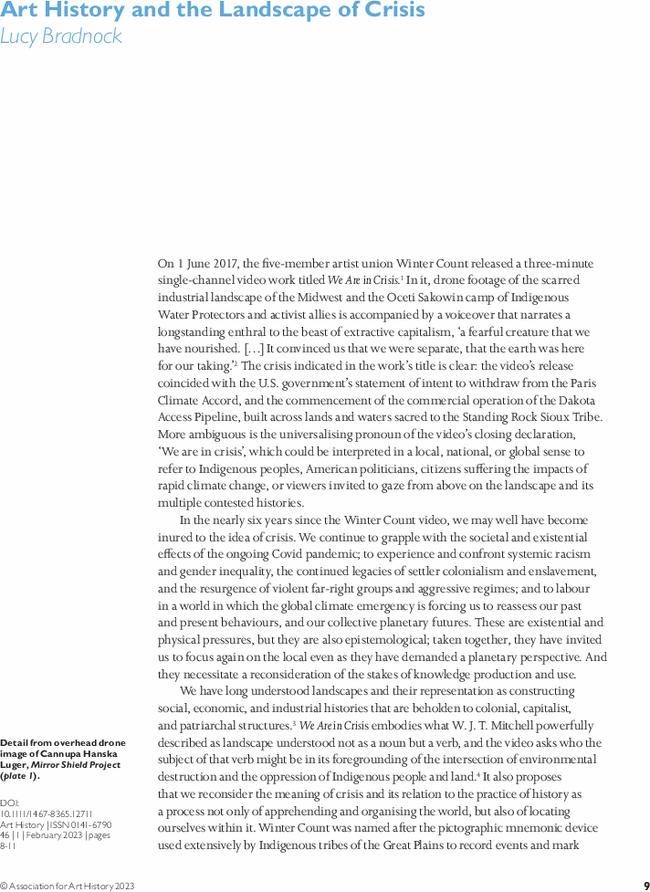Art History and the Landscape of Crisis
IF 0.4
2区 艺术学
0 ART
引用次数: 0
Abstract
On 1 June 2017. the five-member artist union Winter Count released a three-minute single-channel video work titled We Are in Crisis. In it, drone footage of the scarred industrial landscape of the Midwest and the Oceti Sakowin camp of Indigenous Water Protectors and activist allies is accompanied by a voiceover that narrates a longstanding enthral to the beast of extractive capitalism. The crisis indicated in the work's title is clear: the video's release coincided with the US government's statement of intent to withdraw from the Paris Climate Accord, and the announcement of the commercial operation of the Dakota Access Pipeline, built across lands a waters sacred to the Standing Rock Sioux Tribe. More ambiguous is the universaling pronoun of the video's closing declaration: We are in crisis', which could be interpreted in a local , national. or global sense to refer to Indigenous peoples, American politicians, citizens suffering the impacts of rapid climate change or viewers invited to gaze from above on the landscape and its multiple contested histories. In the nearly six years since the Winter Count video, we may well have become inured to the idea of crisis. We continue to grapple with the societal and existential effects of the ongoing Covid pandemic;to experience and confront systemic racism and gender inequality, the continued legacies of settler colonialism and enslavement and the resurgence of violent far-right groups and aggressive regimes;and to labour in a world in which the global climate is forcing us to reassess our past and present behaviours, and our collective planetary futures. These are existential and physical pressures, but they are also epistemoligical;taken together. they have invited us to focus again on the local even as they have demanded a planetary perspective. And they necessitate a reconsideration of stakes of knowledge production and use.

艺术史与危机景观
本文章由计算机程序翻译,如有差异,请以英文原文为准。
求助全文
约1分钟内获得全文
求助全文
来源期刊

Art History
ART-
CiteScore
0.70
自引率
20.00%
发文量
51
期刊介绍:
Art History is a refereed journal that publishes essays and reviews on all aspects, areas and periods of the history of art, from a diversity of perspectives. Founded in 1978, it has established an international reputation for publishing innovative essays at the cutting edge of contemporary scholarship, whether on earlier or more recent periods. At the forefront of scholarly enquiry, Art History is opening up the discipline to new developments and to interdisciplinary and cross-cultural approaches.
 求助内容:
求助内容: 应助结果提醒方式:
应助结果提醒方式:


